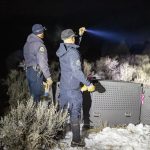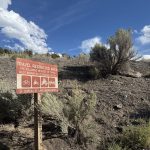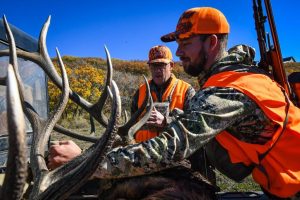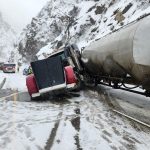Colorado’s highest peaks are starting to see snow — but summer isn’t over yet
Snow has been reported on Pikes Peak, Grays and Torreys, the Maroon Bells and a handful of other 14,000-foot peaks so far this year
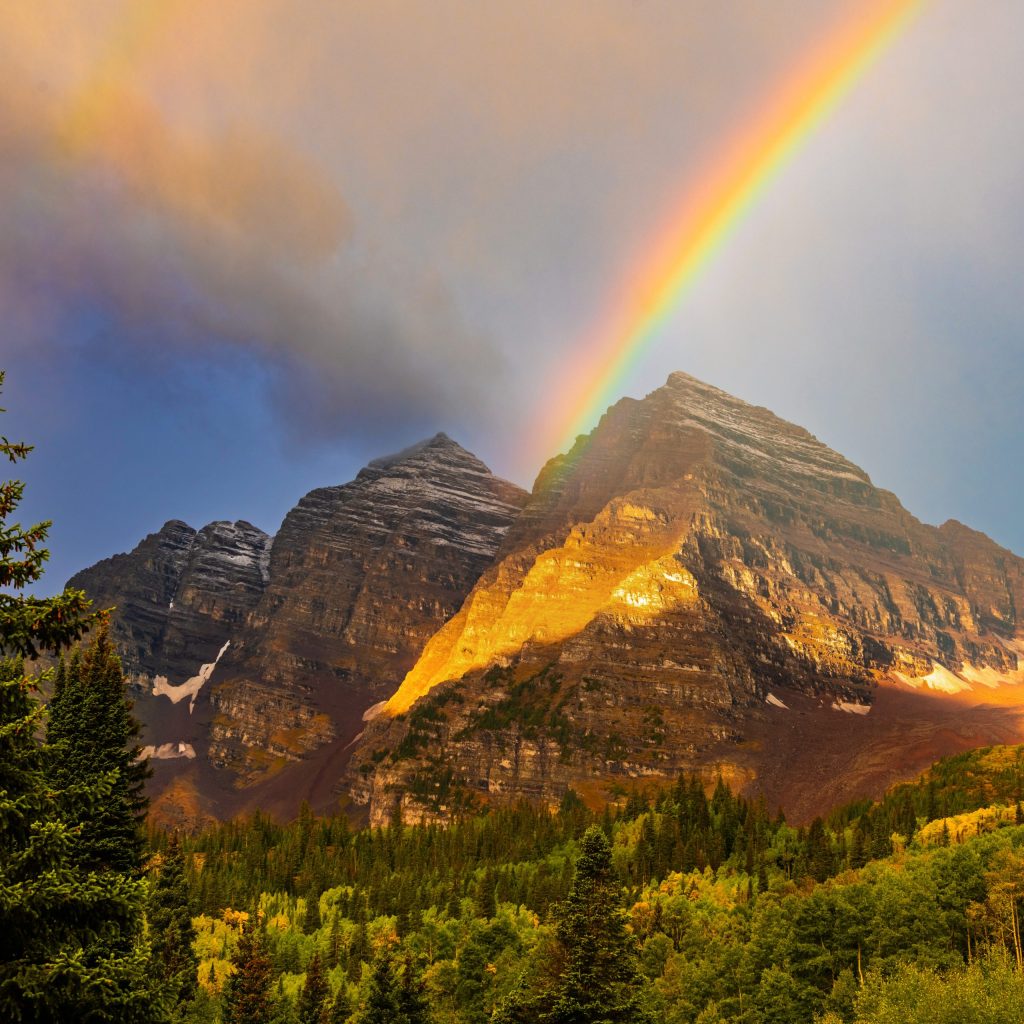
Jeremy Swanson/Courtesy photo
Colorado’s highest peaks are starting to get dustings of snow as wetter, colder weather has pushed into the mountains after a hot, dry summer.
Meteorologist Seth Linden — who runs Seth’s Weather Report, a popular Facebook page that provides mountain forecasts — said the reports of snow on Colorado’s 14,000-foot peaks are coming right on schedule.
“We’re just getting started,” Linden said. “It’s, of course, not uncommon this time of year to have these weak upper-level snows as the jet stream starts to come in and it’s raining at lower elevations and it’s snowing up top. That’s classic fall in Colorado.”
One of the first reports of snow came in Sept. 5 from Pikes Peak, the tallest mountain on the Front Range, with a webcam on the mountain showing the visitor area and parking lot at the top of the 14,111-foot peak covered in white.
And rainy, cold weather across much of the state late this week led to more reports of snow.
From Frisco Main Street on Thursday evening, a wisp of snow could be seen on the peaks of Grays and Torreys — two 14,000-foot summits — as it rained in town. By Friday morning, traces of snow were also being reported on the Maroon Bells, Pyramid Peak and Capitol Peak near Aspen, and in the San Juan Mountains further south.
Most of the snow this week appeared to fall above 12,000 and 13,000 feet, Linden said. He said precipitation is expected to continue Saturday afternoon with more chances for snow in places like Summit County’s Tenmile Range and the Collegiate Peaks in Chaffee County.
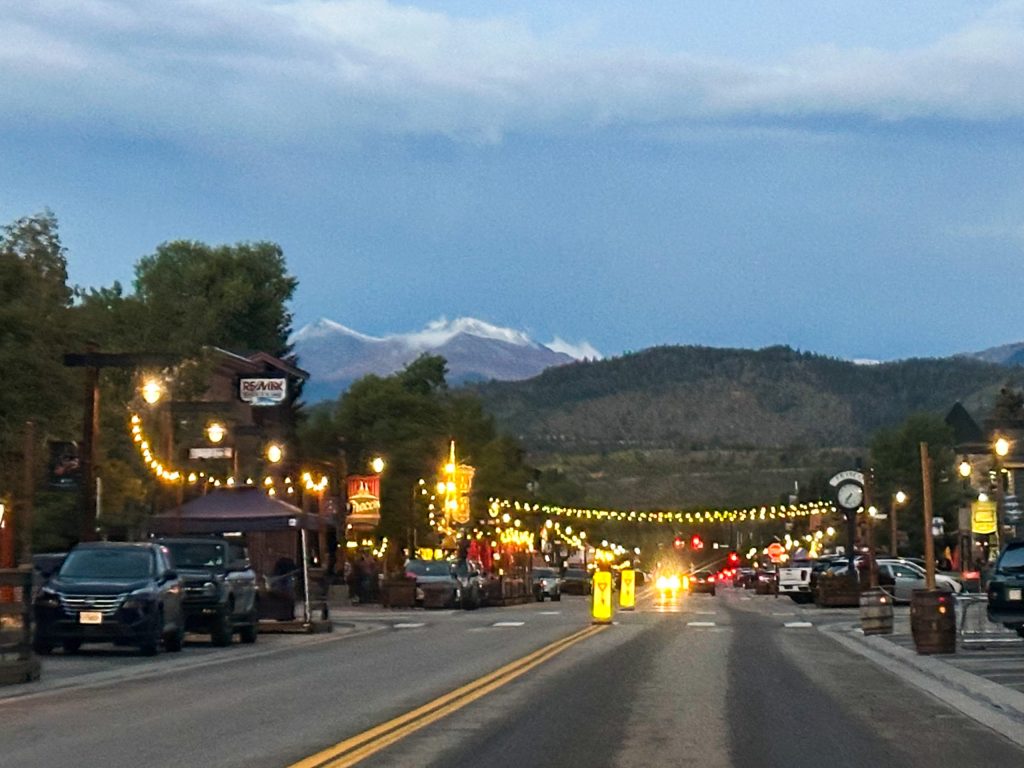
Like many Coloradans, Linden said the first snow of the season has him dreaming of the ski season, which he said he expects to be a good one, based on the long-term forecasts he’s seen so far.
“The reason people are so excited about the first snowfall is it marks the changing of the seasons, moving away from summer heat,” Linden said. “There’s just so many people that love to ski and snowboard in Colorado, including me — all of us do.”
A weak La Nina pattern is shaping up for the 2025-26 winter season, with climate models predicting that the jet stream will favor the northern U.S., Linden said. For Colorado’s central mountains in the Summit County and the Vail area, he said long-term forecasts show the possibility of near- to above-average snowfall this winter.
The Steamboat Springs area could also see above-average snow this winter, while the southern part of the state south of Crested Butte could see slightly-below average snowfall, Linden said.
“I’m hoping — for me too — that it’s a really good ski season for Summit County and Vail and those areas,” he said.
But the ski season isn’t here yet. Temperatures throughout September are forecasted to be slightly above normal, making for nice conditions for hiking and leaf peeping, Linden said. With the rain in recent weeks slowing the turning of the aspen trees, he said he expects the fall colors to peak around the weeks of Sept. 27 and Oct. 4.
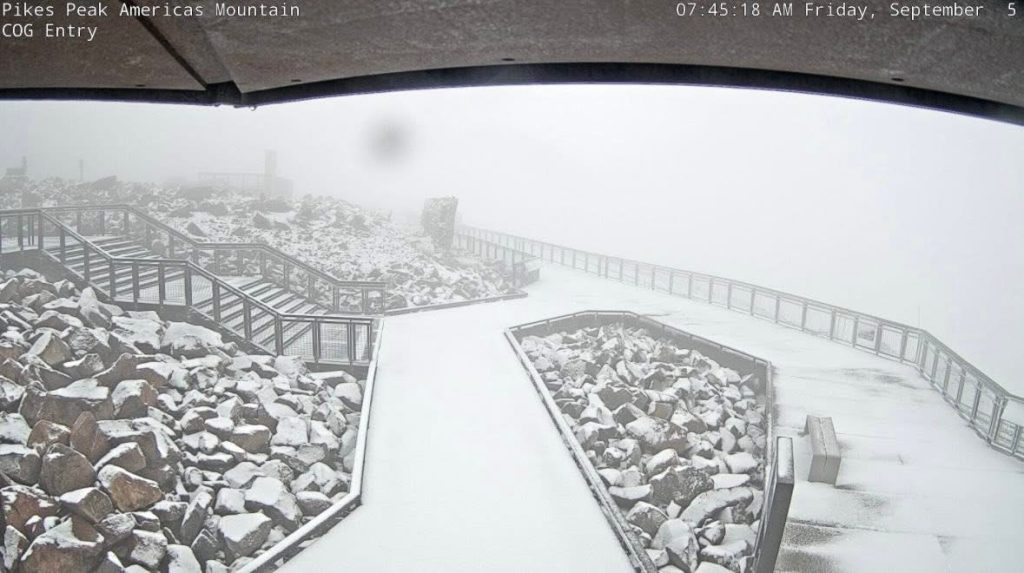
“I just love this time of year because as the light changes and the aspens turn, you get that golden light and then you can get the snow-covered peaks,” Linden said. “But it’s typically still pretty mild, where people are recreating in the mountain valleys, in Summit and Crested Butte and Aspen and those areas.”
With snow starting to appear in the mountains, Alpine Rescue Team member Dawn Wilson said anyone planning to recreate in the backcountry should be prepared with the proper clothing and footwear.
If there is snow, warm, wool socks and shoes with traction — or even microspikes — could be necessary, especially on steeper slopes, Wilson said. With the possibility of ice and snow, she said it may not be the best time for hikers to attempt their first 14er or more technical ridgeline routes, though there are still plenty of lower elevation options.
As always, those heading into the backcountry should prepare ahead by looking at the forecast, Wilson said, noting that storms in the mountains often appear out of nowhere.
She also recommended carrying the 10 essentials and leaving a trip plan with someone who is staying behind, detailing the route and when they should expect you back.
“It’s shoulder season in Colorado. I call it the personality disorder of shoulder season, ‘It’s sunny out — and now it’s snowing.’ You’ve just got to be prepared,” Wilson said. “If you don’t know what you’re doing or you’re just having a bad day, rescue teams in Colorado are always there to help you out.”

Support Local Journalism

Support Local Journalism
Readers around Glenwood Springs and Garfield County make the Post Independent’s work possible. Your financial contribution supports our efforts to deliver quality, locally relevant journalism.
Now more than ever, your support is critical to help us keep our community informed about the evolving coronavirus pandemic and the impact it is having locally. Every contribution, however large or small, will make a difference.
Each donation will be used exclusively for the development and creation of increased news coverage.


